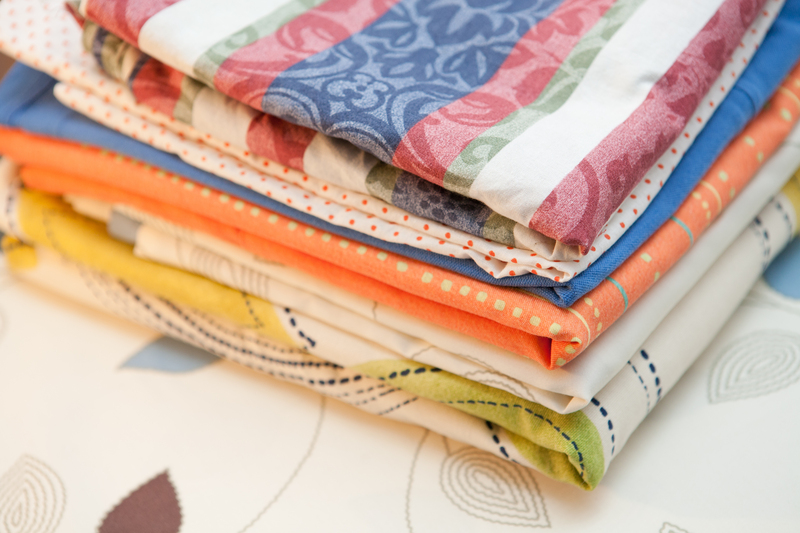Proven Methods to Protect and Store Your Sofa for the Long Haul
Protecting and storing your sofa properly ensures its longevity, maintains its appearance, and saves you money in the long run. Whether you're preparing for a move, renovating your home, or creating more space, understanding the right sofa protection and storage methods is crucial. In this comprehensive guide, we'll explore tested techniques and proven tips to keep your couch or sofa in top condition until it's ready to shine again in your living space.

Why Proper Protection and Storage is Essential for Sofas
Without the right precautions, your sofa can suffer from dust, pests, mold, fading, or structural damage during storage. Even short-term neglect can lead to expensive repairs or the need for a replacement. Implementing effective sofa protection strategies not only preserves aesthetics and function but also upholds your investment's value. Let's break down the step-by-step process for protecting and storing your sofa the right way.
Step 1: Clean and Prepare Your Sofa
Why Cleaning Matters Before Storage
Dirt and grime left on your couch can lead to staining, odor, and even mold over time. Thorough cleaning is the foundation of proper sofa preservation. Here's how you should proceed:
- Vacuum every surface, including cushions, under the seats, armrests, and crevices.
- Spot clean any stains with an appropriate cleaner for your sofa's material (fabric, leather, or synthetic).
- If your sofa covers are removable, wash them according to the manufacturer's instructions.
- Allow your sofa and all its components to dry completely to prevent mildew growth during storage.
- For leather sofas, apply a high-quality leather conditioner to preserve suppleness and prevent cracks.
Step 2: Disassemble if Possible
The Benefits of Breaking Down Your Sofa
Disassembling your sofa--by removing legs, cushions, or armrests--makes it easier to transport and store. It also minimizes the risk of accidental damage.
- Refer to your sofa's manual or brand website for disassembly instructions.
- Store all screws, bolts, and small pieces in a clearly labeled bag attached to your sofa frame.
- Keep detached cushions and fabric pieces in breathable storage bags to allow air circulation.
Step 3: Select the Best Sofa Storage Location
Choosing Between Self-Storage Units or Home Storage
Where you store your sofa can greatly influence its condition. The ideal storage space is clean, well-ventilated, dry, and temperature-controlled. Here's what to look for:
- Climate control: Prevents extreme temperatures and humidity fluctuations that cause fabric fading, warping, or mold.
- Low humidity: Protects your sofa from moisture-related damage like mildew and rust on metal parts.
- Clean and pest-free environment: Reduces the risk of insects or rodents harming your sofa.
If you're storing your sofa at home, choose an interior room or elevated area instead of a damp basement or garage.
Step 4: Wrap and Cover the Sofa the Right Way
Best Materials for Sofa Protection in Storage
- Breathable fabric covers or furniture storage blankets are ideal for long-term storage. Unlike plastic wrap, they permit air circulation, preventing moisture buildup and mold.
- For short-term storage or transport, thick plastic sheeting can be used, but ensure it's loose-fitting and removed for extended periods.
- Secure covers with soft ties or bungee cords. Avoid strong adhesive tape that may leave residue or harm the upholstery surface.
- If your sofa has wooden components, consider wrapping them separately in bubble wrap or moving blankets for extra protection.
Step 5: Elevate and Arrange for Optimal Preservation
Correct Positioning Matters
Never place your sofa directly on the floor of a storage space, especially if it's concrete. Moisture can transfer to your sofa's legs or base, risking rot or rust. Instead:
- Use pallets, sturdy shelves, or furniture risers to lift the sofa off the ground.
- Leave a gap between the sofa and storage unit walls for air circulation and easy access.
- Do not stack heavy boxes or items on top of your sofa--this can deform the cushions and frame.
Step 6: Regular Maintenance and Inspection
Periodic Checks are Key for Long-Term Storage
- Inspect your stored sofa every few months to make sure covers are intact and there are no signs of pests, mold, or moisture.
- If storing long-term, refresh moisture-absorbing packets or silica gel packs nearby to combat humidity.
- Airing out the sofa and replacing covers after several months helps prevent musty odors.
Bonus Tips: Extra Measures for Long-Term Sofa Protection
In addition to the foundational steps, consider these advanced techniques for preserving your couch in storage:
- Use pest deterrents such as cedar chips, lavender pouches, or commercial repellents around but not on the sofa.
- Invest in a reputable self-storage company with good security, fire protection, and insurance options.
- If storing leather sofas, avoid direct sunlight in storage to protect against color fading and drying out.
- Document your sofa's condition with photos before storage for insurance and peace of mind.
Common Mistakes to Avoid When Storing Your Sofa
- Using non-breathable plastic for months: Traps moisture, leading to mold, mildew, and fabric yellowing.
- Skipping the cleaning step: Residual crumbs or sweat can become a magnet for pests or cause permanent stains.
- Storing in damp or humid areas: Direct exposure to basement or garage conditions dramatically increases risk of water damage.
- Forgetting regular inspections: Small issues can become destructive if not addressed promptly.
- Overloading the sofa: Piling objects on top can flatten or deform cushions irreversibly.
Sofa Storage Solutions for Any Space
Short-Term vs Long-Term Sofa Storage
Whether you need to store your couch for a few weeks or several years, the same protection principles apply. For short-term needs (such as during home improvements), you may not have to disassemble completely, but always clean and cover the sofa. For long-term storage, temperature control and breathable protection are non-negotiable for safeguarding both structure and upholstery.
Creative Ideas for Home Sofa Storage
- Designate a guest room or spare bedroom as temporary furniture storage.
- Erect partition curtains or screens in a finished basement or large living area to create a dust-free sofa zone.
- Store in an unoccupied walk-in closet, ensuring the door stays open to avoid stale air buildup.
Choosing a Professional Sofa Storage Facility
If you lack safe space at home, choosing a professional storage provider is wise. Seek out companies that offer climate-controlled units, active surveillance, pest management, and flexible access to your belongings. Read reviews to ensure reliability and customer satisfaction.
How to Prepare Each Sofa Type for Storage
Couch care needs can vary by material:
- Fabric sofas: Prioritize vacuuming, stain treatment, and using dust-proof covers.
- Leather sofas: Condition with specialty creams and wrap in breathable, non-abrasive materials.
- Sectionals and recliners: Label all detachable sections and wrap mechanisms in extra padding to avoid scratches or mechanical failure.

Frequently Asked Questions on Sofa Protection and Storage
How long can I safely store a sofa?
With the right cleaning, packing, and climate control, sofas can be stored indefinitely without damage. However, it's wise to inspect them every 4-6 months for the best results.
Is it safe to store a sofa vertically?
Storing sofas upright may save space but can stress the frame, fabric, or padding. Store horizontally and fully supported whenever possible to avoid warping.
What's the best way to keep pests away from a stored couch?
Pre-storage cleaning is critical to remove food smells. Use sealed covers and natural pest deterrents like cedar or lavender outside the sofa's surface.
Conclusion: Secure Your Sofa's Future with Proven Sofa Storage Techniques
By following these proven techniques to protect and store your sofa, you prolong its lifespan, uphold its comfort, and save considerably compared to buying new furniture. Clean thoroughly, choose a climate-appropriate storage spot, use proper covers, and check periodically to guarantee your sofa's longevity. Whether it's a treasured heirloom or a modern centerpiece, your couch deserves only the best in protection--and now, you know exactly how to provide it for the long haul.
Ready for a fresh start? When the time comes, your sofa will look and feel just as inviting as the day you stored it, thanks to your care and these expert methods.



